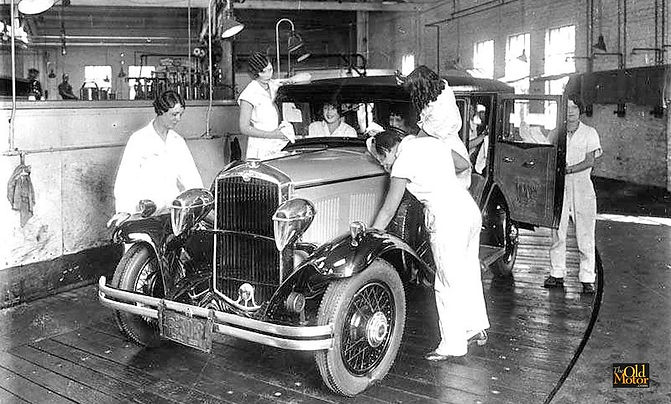History of Auto Detailing
The history of auto detailing can be traced back to the early days of the automobile when cars were first being produced on a large scale.
The earliest form of auto detailing was known as "hand washing." This involved using a bucket of water and a sponge or rag to clean the exterior of a vehicle. This method was labor-intensive and not very effective, but it was the only option available at the time. The first car washes were also primitive, consisting of a simple system of rollers and brushes that would rotate around the vehicle, cleaning it as it passed through. These early car washes were not very effective and were mainly used to remove dirt and debris from the exterior of a vehicle.
In the 1920s, the first automatic car washes were introduced. These car washes used a system of conveyor belts to move the vehicle through the wash, while powerful jets of water and soap were used to clean the exterior. These car washes were much more efficient and effective than the previous hand washing and roller brush systems. They quickly became popular, and many gas stations and garages began to offer car washing services.
During the 1930s, the first mobile car washing services were introduced. These services would come to a customer's location, usually a home or office, and wash the vehicle on site. These mobile car washing services were very popular, as they allowed customers to have their vehicle cleaned without having to leave their home or office.
In the 1940s, the first professional detailing services were introduced. These services were run by skilled technicians who were trained to clean, polish, and protect the exterior and interior of a vehicle. These professional detailing services were much more effective than the previous car washing methods, and they quickly became popular among car owners.
During the 1950s, the first automated detailing equipment was introduced. This equipment included things like pressure washers, polishers, and buffing machines. These machines were much more efficient than the previous hand-held tools, and they allowed detailing technicians to work much faster and more effectively.
In the 1960s, the first car detailing products were introduced. These products included things like polishes, waxes, and sealants. These products were designed to protect the paint and finish of a vehicle, and they quickly became popular among car owners.
During the 1970s, the first computer-controlled detailing equipment was introduced. This equipment used computer technology to control the speed and pressure of the equipment, making it much more precise and accurate. This technology allowed detailing technicians to work more efficiently and effectively, and it quickly became popular among car owners.
In the 1980s, the first waterless detailing products were introduced. These products were designed to clean, polish, and protect a vehicle without the use of water. This was a major breakthrough in the detailing industry, as it allowed detailing technicians to work in areas where water was not available or where water restrictions were in place.
During the 1990s, the first robotic detailing equipment was introduced. This equipment was designed to automate the detailing process, allowing technicians to work more efficiently and effectively. This technology quickly became popular among car owners, as it allowed them to have their vehicles detailed without having to spend a lot of time at the detailing shop.
Today, auto detailing has become a highly specialized industry, with a wide range of products and services available. Detailing technicians to use a variety of tools and techniques to clean, polish, and protect the exterior and interior of a vehicle. They use specialized products like clay bars, polishes, and sealants.



